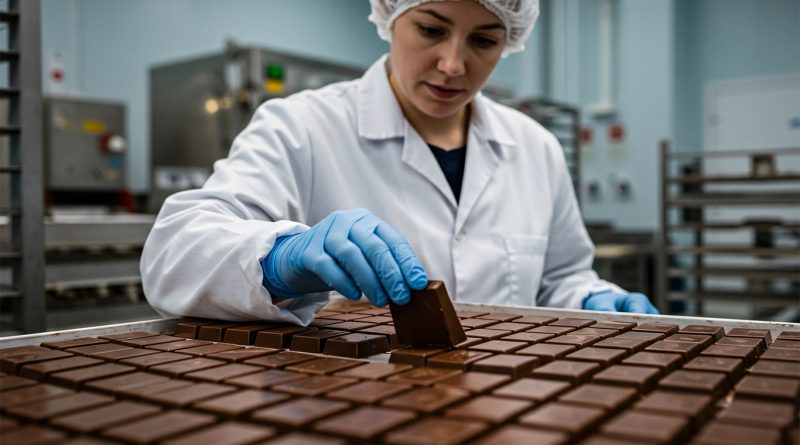Barry Callebaut bets on lab-grown cocoa to safeguard chocolate’s future
Subscribe to our free newsletter today to keep up to date with the latest food industry news.
For decades, the global chocolate industry has relied almost entirely on a handful of tropical regions to supply its most essential ingredient. Cocoa, like many agricultural commodities, is facing growing threats. Climate change is disrupting yields, with prolonged droughts, unpredictable rainfall, and rising temperatures affecting harvests in West Africa and South America. The spread of plant diseases such as cocoa swollen shoot virus and frosty pod rot has also reduced output.
These challenges are occurring as global demand for chocolate continues to rise. West Africa, which produces more than 60 percent of the world’s cocoa, faces additional scrutiny over deforestation and labor practices. With prices climbing and supply volatility increasing, chocolate makers are seeking new ways to protect their production while maintaining quality.
Barry Callebaut, one of the largest chocolate and cocoa suppliers in the world, is looking to laboratories for an answer.
Cultivated cocoa – from orchard to bioreactor
In July 2025, Barry Callebaut announced a partnership with California Cultured, a food technology company specializing in cell culture ingredients, to develop cultivated cocoa at commercial scale. The concept is similar to cultivated meat. Instead of growing cocoa trees, scientists grow cocoa cells in controlled environments.
The process begins with a small sample of plant tissue taken from a cocoa bean or leaf. These cells are placed in bioreactors, where they are fed a mix of nutrients, water, and plant hormones that stimulate growth. Over time, the cells develop into cocoa biomass containing both cocoa solids and cocoa butter. The result is chemically identical to farmed cocoa but produced without the land use, pesticides, or deforestation typically linked to cocoa cultivation.
Cultivated cocoa can be produced in weeks rather than years and requires significantly less water. It can also be made in regions far from the equator, which could reduce the impact of climate and political instability on supply.
A strategic move for sustainability
Barry Callebaut does not intend to replace traditional cocoa farming in the near term. Instead, the company sees cultivated cocoa as a complementary source that can fill gaps when conventional supply is under strain. California Cultured provides the technology, while Barry Callebaut offers global market reach and integration into existing product lines. Early testing indicates that cultivated cocoa matches traditional cocoa in taste and performance, which may help encourage consumer acceptance.
The approach supports the company’s sustainability commitments, which include ending deforestation in its supply chain and improving the livelihoods of cocoa farmers. By reducing the pressure on traditional growing regions, cultivated cocoa could allow farmers to focus on more sustainable farming practices and diversify their incomes.
Opportunities and challenges
The advantages of cultivated cocoa extend beyond resilience. The technology offers consistent quality and traceability, with each batch produced under the same conditions. It eliminates many of the ethical and environmental issues tied to traditional cocoa farming, which could appeal to premium chocolate brands and ethically conscious consumers.
However, scaling the technology to meet industrial demand will be expensive. The cost of producing cultivated cocoa remains high compared to conventionally farmed beans, and the economics will depend on further innovation in production methods. Regulatory approval also presents a challenge, as requirements differ widely between countries. Some markets, such as the United States and Singapore, have already approved certain cell-based foods, while others are moving more cautiously.
If successful, cultivated cocoa could reshape the chocolate industry over the next decade. For Barry Callebaut, the investment is both a hedge against uncertainty and a step toward a more sustainable future for chocolate.
Sources:
